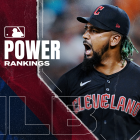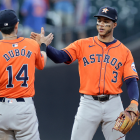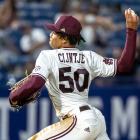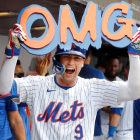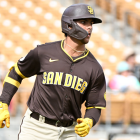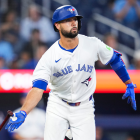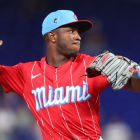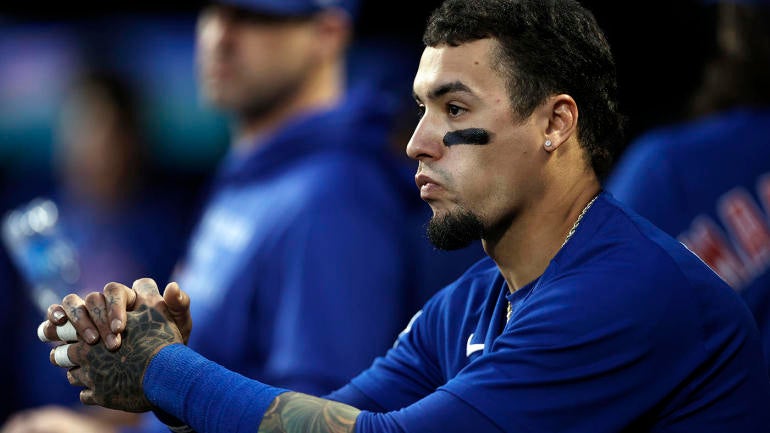
The Mets and the Cubs agreed to a three-player trade ahead of the deadline that will send infielder Javier Báez and right-hander Trevor Williams to New York in exchange for teenage outfield prospect Pete Crow-Armstrong, according to MLB.com's Mark Feinsand.
Báez gives the Mets another exciting player who can help keep them afloat during shortstop Francisco Lindor's absence. Williams, meanwhile, provides some rotation depth. In exchange, the Cubs get an intriguing outfielder who is currently rehabbing from shoulder surgery.
We here at CBS Sports are the judgmental kind, if little else. As such, you'll find our instant-reaction grades for both sides of this trade below. It should go without saying that this is more of an art than a science. First, let's reprint the rumored terms of the deal:
- Cubs trade: INF Javier Báez, RHP Trevor Williams
- Mets trade: CF Pete Crow-Armstrong
Now, onto the hot air and the gas baggery.
Mets grade: C
Báez, a free agent at year's end, hit .248/.292/.484 (108 OPS+) with 22 home runs and 13 stolen bases (on 16 attempts) in 91 games with the Cubs this season. That's an upgrade over what he did last year, but it's below what he accomplished in both 2018 and 2019, when he made the All-Star Game twice and finished second in Most Valuable Player Award voting once.
If the above statline didn't give it away, then here's a secret: Báez is an aggressive batter. He's offered at 58 percent of the pitches he's seen this season, including 45 percent of those he's seen outside of the traditional strike zone. To his credit, he's found a way to make it work so far. There is a good deal of attrition risk here, however, because of an increased tendency to strike out. Báez's K rate has bloated to 36.3 percent, which, when combined with his walk allergy, puts ample pressure on his ability to impact the baseball. Again, he's been reasonably productive with that formula so far this season, but it's fair to have sustainability concerns.
Elsewhere, Báez is a brilliant, dynamic player who has a great sense of where he is at all times on the diamond. That allows him to make plays, both in the field and on the basepaths, that most others wouldn't attempt.
In the near term, he figures to serve at shortstop until Lindor returns from the injured list. After that, it could be a matter of who the Mets have available to them. If everyone is healthy, then Báez would likely slot in at the hot corner, with Jeff McNeil sticking at second. This being the Mets, you can't assume everyone will be healthy for the stretch run.
The Mets had investigated other starting pitchers (including José Berríos, who was traded to the Blue Jays)
before landing on Williams, who can be charitably described as a downmarket option. In 13 appearances with the Cubs, he posted a 5.06 ERA (80 ERA+) and a 2.77 strikeout-to-walk ratio. He does most of his work with a low-90s fastball and a slider that has generated whiffs on more than 40 percent of the swings taken on it this year. Theoretically, the Mets could keep him around for next season, but he looks like an extra arm who gets non-tendered this winter.
We're docking the Mets' grade a touch because Báez appears more risky than some of the other options out there -- Kris Bryant, Trevor Story; because they hadn't yet acquired a superior starting option to Williams as of press time; and because they gave up a legitimately good prospect for what amounts to two rental pieces. There's no question the Mets' big-league roster is better now than it was entering the day, this just felt like an odd swap compared to the others being made around the league.
Cubs grade: A
As with the Anthony Rizzo trade prior, it stinks from an emotional and fan perspective that the Cubs elected to move Báez rather than sign him to a long-term extension. If you can overlook or move beyond that aspect, the Cubs did well here from a pure baseball trade point of view.
Crow-Armstrong, who underwent season-ending shoulder surgery in May to repair a torn labrum, was the No. 19 pick in the 2020 draft. He's a fierce defensive player who could win a Gold Glove Award in center field down the road. The jury will remain out on his offensive game for a while longer (he's appeared in only six professional games), but he has enough innate ability to envision him becoming a solid, if unspectacular hitter when all is said and done.
Combined with the Rizzo and Craig Kimbrel trades, the Cubs have done well to replenish their farm system by moving players who would've likely hit free agency at year's end. (Kimbrel has an option.) Again, it's abhorrent that one of the most prestigious franchises in pro sports would completely sacrifice the emotional attachment aspect, but at least they're upholding the other end of the bargain by making trades that could one day help them win again.










